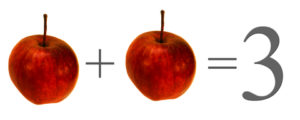 Late last week a group of marketers filed an amended lawsuit against Facebook alleging that it knowingly overestimated audience reach levels.
Late last week a group of marketers filed an amended lawsuit against Facebook alleging that it knowingly overestimated audience reach levels.
Court papers filed in the suit indicate that:
“Facebook’s internal documents show that Facebook personnel knew for years that the Potential Reach metric that it provides to Facebook advertisers on its advertisement purchasing interfaces (including on Ads Manager and Power Editor) was inflated and misleading.”
The evidence for these actions was identified in the original complaint and was based upon analysis conducted by independent groups, including the Video Advertising Bureau. In their 2017 report, the Video Advertising Bureau found that Facebook’s purported reach in every state in the U.S. exceeded their populations. A red flag to be sure.
Not excusing Facebook’s alleged behavior, one would think that an observant marketer or agency media buyer would question reach levels that are greater than the population of a given market(s) and raise questions, long before such revelations are made in relation to a lawsuit.
The irony is that reach estimates apparently were not questioned by agency planners or clients during the media planning process, nor at the time of post-campaign performance summary meetings. The seminal question is, “Why not?” Further, if and when suspicions were raised, wouldn’t it be reasonable to expect media buyers to exclude any publisher suspected of inflating reach levels from consideration to begin with, and cease allocating client media funds to that entity moving forward? The answer is obviously “no.”
When one sees examples of this type of lackluster media stewardship, it is easy to understand why the C-Suite might question the efficacy of their organization’s advertising investments.
The fact of the matter is that Facebook has seen its annual global ad revenues grow from $1.8 billion in 2010 to over $69.5 billion in 2019 (source: Statista, 2020). Along the way, there have been publicly aired concerns about the accuracy of Facebook’s user base, culminating with the platform’s acknowledged purges of 3.3 billion “fake” accounts in 2018 and another 5.4 billion in 2019.
Certainly, as part of the heralded duopoly, media professionals have been keenly aware of the share of digital ad spend which Google and Facebook have accounted for as part of the digital media sector’s meteoric growth. eMarketer estimates that the duo represented 56.3% of total U.S. digital ad spend in 2019, with Facebook accounting for 19.2% of the total.
During this period of increased digital ad spend, advertisers paid their digital agency partners plenty in the way of fees and commissions to provide consultation, planning support, buy stewardship and oversight. So why did it take so long to identify the fact that a media seller’s reach exceeded the audience universe?
“The obvious is that which is never seen until someone expresses it simply.” ~ Khalil Gibran
